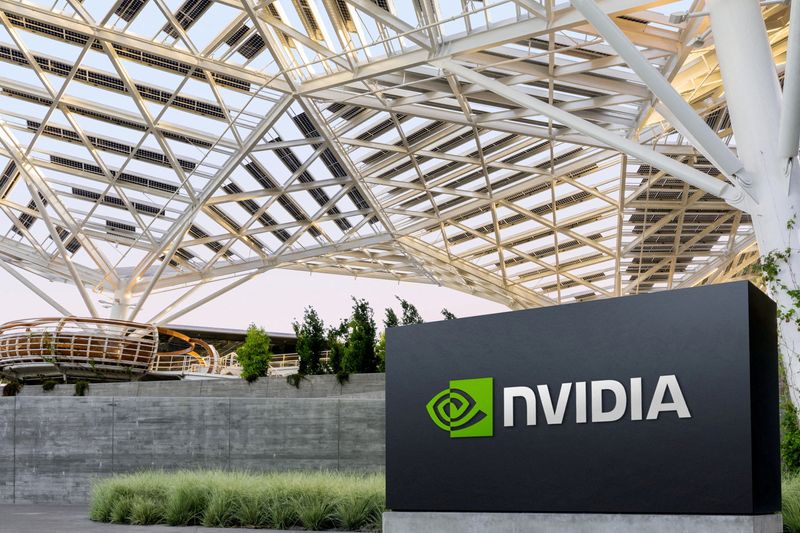DENVER - In a move to propel the advancement of humanoid robotics, NVIDIA announced the release of new development tools and platforms aimed at aiding robot manufacturers and AI developers. The suite includes NVIDIA NIM™ microservices, NVIDIA OSMO cloud orchestration service, and an AI- and simulation-enabled teleoperation workflow.
The NIM microservices are designed to streamline the deployment process, reducing it from weeks to minutes by using pre-built containers powered by NVIDIA inference software. These services, including the MimicGen NIM and Robocasa NIM, facilitate the enhancement of simulation workflows and the generation of robot tasks and simulation-ready environments.
NVIDIA OSMO, now available, allows for the orchestration of complex robotics development workflows over distributed computing resources, significantly cutting development cycle times.
The teleoperation workflow demonstrated at the SIGGRAPH conference enables the capture of human demonstration data through Apple (NASDAQ:AAPL) Vision Pro, which is then simulated in NVIDIA Isaac Sim. This process generates synthetic datasets that aid in training humanoid robots, potentially saving time and reducing costs.
NVIDIA has also introduced computing platforms to support the development of humanoid robots. This includes AI supercomputers for model training, NVIDIA Isaac Sim built on the Omniverse platform for skill refinement in simulated worlds, and NVIDIA Jetson™ Thor robot computers to run the models.
Developers can access these tools through the NVIDIA Humanoid Robot Developer Program, which provides early access to the new offerings and the latest releases of the company's robotics technologies.
Companies such as Fourier and Boston Dynamics have expressed support for NVIDIA's initiatives, citing the benefits of simulation technology and the early-access program in accelerating model development and industry advancement.
In other recent news, NVIDIA has announced significant advancements in Universal Scene Description (OpenUSD), aimed at expanding its use to sectors such as robotics, industrial design, and engineering. These enhancements, built on the NVIDIA Omniverse platform, are designed to facilitate the creation of accurate virtual worlds and digital twins, essential for the next generation of AI and robotics. Among the new offerings are NVIDIA NIM microservices, which utilize OpenUSD language to streamline digital twin development. NVIDIA's collaboration with Siemens aims to integrate OpenUSD pipelines with Siemens' Simcenter simulation technologies, enhancing decision-making and collaboration.
In other recent developments, Taiwan's economic growth for the second quarter was bolstered by a surge in artificial intelligence (AI) technology exports, despite a slowdown. The island's gross domestic product (GDP) likely grew by 4.8% compared to the same period last year. Taiwan's second-quarter exports saw a 9.9% year-on-year increase, a slowdown from the 12.9% growth in the previous quarter. The demand for AI-related products has significantly contributed to this growth, with Taiwan Semiconductor Manufacturing Co., the world's largest contract chipmaker, playing a key role.
Meanwhile, China's industrial firms have reported a 3.6% increase in profits for the month of June, a significant acceleration from the 0.7% rise seen in May, according to the National Bureau of Statistics (NBS). This improvement comes despite a broader economic downturn that has dampened consumer sentiment and slowed recovery efforts. In response to the fragile economic conditions, China has introduced more aggressive monetary stimulus measures.
Lastly, investors are stepping back from some of this year's most popular investments as a decline in major technology stocks sparks a wide-ranging selloff affecting assets from cryptocurrencies to gold. Wednesday marked the most significant daily selloff on Wall Street since late 2022, with the NASDAQ:COMP dropping 3.6% and the S&P 500 falling 2.3%. However, both indices saw a rebound on Thursday afternoon.
InvestingPro Insights
NVIDIA Corporation (NASDAQ:NVDA), a prominent player in the Semiconductors & Semiconductor Equipment industry, has been making significant strides not only in its core business but also in the development of advanced technologies for robotics. As NVIDIA unveils its new suite of tools for humanoid robotics, its financial metrics and market position provide insights into the company's performance and potential.
According to InvestingPro data, NVIDIA has a robust market capitalization of $2750.0 billion, reflecting its significant presence in the market. The company's revenue growth has been impressive, with a staggering 208.27% increase over the last twelve months as of Q1 2023. This growth is further highlighted by a quarterly revenue growth of 262.12% in Q1 2023, indicating a strong upward trajectory in NVIDIA's financial performance.
The company's P/E Ratio stands at 64.66, which, while high, may be justified by NVIDIA's rapid growth and its strategic investments in emerging technologies like humanoid robotics. An InvestingPro Tip points out that analysts anticipate sales growth in the current year, which could suggest continued momentum for the company's stock.
Investors interested in NVIDIA's future prospects might also appreciate that the stock has experienced a high return over the last year, with a 141.91% increase in its year-to-date price total return as of the data provided. This is indicative of the market's confidence in NVIDIA's strategic direction and its ability to capitalize on growth opportunities.
For those looking to delve deeper into NVIDIA's financial health and future potential, InvestingPro offers more tips and insights. There are 20 additional InvestingPro Tips available for NVIDIA, providing a comprehensive analysis of the company's financials, market performance, and industry standing. To access these valuable insights, visit InvestingPro's NVIDIA page and consider using the coupon code PRONEWS24 to get up to 10% off a yearly Pro and a yearly or biyearly Pro+ subscription.
This article was generated with the support of AI and reviewed by an editor. For more information see our T&C.
